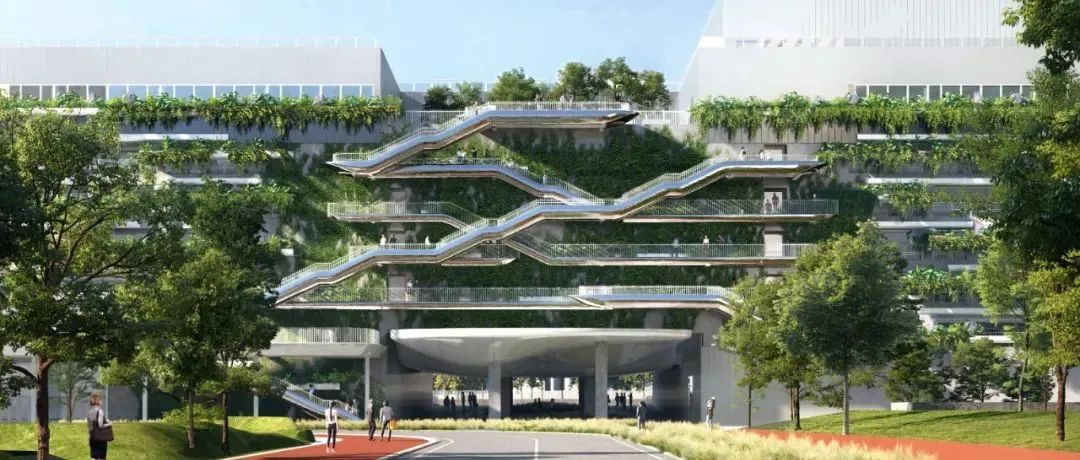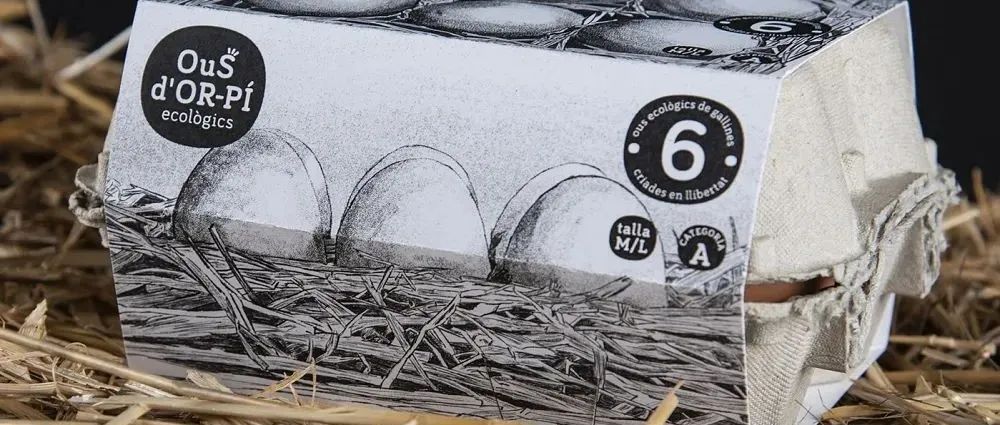© Unsplash
荷兰,被称之为低地之国。平坦地势与低于海平面的独特地理环境,让这个国家长期处于与自然环境相互依存的复杂平衡之中。因此,荷兰在经济高度发达的同时,也积极致力于可持续发展的实践,在循环经济、生态保护、水环境治理等领域全球领先。
在碳中和指标所涉及的众多领域中,建筑行业巨量的碳排放引起了世界各国的重视。荷兰提出了循环建筑的理念,根据荷兰绿色建筑委员会公布的“循环建筑框架”,使用更少、更环保、可再生、可重复使用、无毒无害、可生物降解的原材料是判断循环建筑的重要指标。越来越多荷兰的专家学者们也在循环建筑的理念之下,寻找更可持续的社会转型发展路径。
© Sabel Nabuurs
木建筑媒体 Design Warehouse 通过对荷兰著名政治学家与城市规划师 Maarten Hajer 教授进行采访,以更开放的视野,共同探讨在未来城市发展中“木材”作为建筑材料将能发挥的重要作用,了解一位政治学家对城市未来与木制建筑发展的观点与见解。
·专访 Interview
未来,木制建筑能创造一个怎样的城市?
Maarten Hajer
D W:在您所著的《城市智慧》一书中,您提到 “ 需要一场社会运动,来动员人文、科学学科以及所有人的力量,以应对现在所面临的挑战,建设一个可以存活下来的城市星球。” 建筑行业作为影响环境的重要因素,有责任参与到这场运动中来并采取行动。如果未来以木材作为主要的建筑材料,您认为它可能会如何影响城市发展的命运?
M.H:首先,有必要回顾历史。我们在20世纪曾非常幸福,即使当时建造的建筑比19世纪的还要不健康得多。然而,建造这些建筑所产生的环境上的后果随之而来,如今到了不得不寻找替代方案的时候。
M.H: First it is necessary to go back to history and realize that we were extremely happy in the 20th century. It was a finding at that time to make buildings that were much unhealthier than the ones in the 19th century. However, the environmental consequences came and it is now a necessity to look for alternatives.
在谈论木材城市主义时,重要的是找到一种可持续的方式,将自然与社会重新联系起来,做到这一点绝非易事。
When talking about wood urbanism, the importance is by re-relating nature to the society and finding a way to do it in a sustainable manner and that by no means is easy.
改变正在发生,世界一流的建筑公司已经在建造木制建筑,而且许多人对此充满热情。当人们购买木材作为建筑材料,就会自然地考虑起木材的源头。木材生产需要可持续的森林管理,不能为了建造漂亮的木结构建筑而随意砍伐森林,相比其他建筑材料,木材在道德方面的内涵更显著,也更容易被人理解。
This is already happening, as first-class architecture firms are already creating wooden buildings and many are enthusiastic about it. It is more than just building material, by bringing wood back as a building material, you immediately realize that the wood needs to be sourced, that it has to come from somewhere. It needs to be done in a sustainable manner. It cannot be about slashing down the forest in order to build beautiful wooden buildings. The ethical side of the material is more prominent and easy to understand than concrete.
据我所了解,满足在建筑环境中使用的木材的需求量,在现在来看是一个挑战。能让我们可持续地获得足够体量的木材的森林在哪里?随着需求的增加,木材市场的供需已经有些紧张,我们绝对有必要将木材理解为一种作物。
What I do see with wood is the challenge to source the amount of it that needs to be used in the built environment. Where are the forests? That can be sustainably used to get that much wood. There is already some tension in the market, as the demand is increasing. There's an absolute necessity to understand wood as a crop.
D W:从政府层面来看,有哪些不足?哪些地方可以改进?
M.H:目前木材价格仍然昂贵,其中的一个原因是混凝土所产生的负面影响尚未计入其成本之中——二氧化碳的排放没有计入总价,但未来很快就会计入在内,所以混凝土的价格会上涨。从另一个方面来说,在一定程度上降低木材的价格是合理的,因为木制建筑可以存储二氧化碳。如果下一代建筑师找到使用木材的更好方法,并确保城市的木制建筑使用寿命可以长达几个世纪,这也会对降低木材的价格有益。有一些使用木材的新技术,如CLT,尚没有解决旧木材回收再利用的问题。
M.H: One of the reasons wood is still expensive, is that all the negative aspects of concrete are not priced in the cost of the concrete at the moment. The CO2 emission is not priced in. But that will be included soon, so the price of the concrete will go up and on the other hand, it would be fair to make wood cheaper to the extent that the wooden buildings can sink CO2, as wood stores CO2. If the next generation of architects find their ways to use wood and make sure that it will remain in the city for centuries, then it would be beneficial to the material should be made cheaper. Some of the new techniques of using wood, such as CLT, are far less able to reuse the wood that was used, it is difficult to deconstruct and reapplied.
D W:木材作为建筑材料在高密度的城市发展中应该如何应用?
M.H:如果我们看向建筑领域的创新发展,它并不始于精英建筑。现在你可以看到,顶级建筑公司都使用木头进行建造,而且在建造高层建筑方面也有一种奇怪的竞争。我认为这是20世纪的遗留物,把触角伸向天空是使用木材最好的方法吗?我不确定这是否成立。如果您考虑社会学,我们就会想起汽车问世的时候,马车为汽车让路,梅赛德斯的首批车型非常像一辆马车。
M.H: If you look at innovation in building, It doesn't start in elite architecture. Now you see top architecture firms building in wood and there's a strange competition of building highrise in wood. I think this is the leftover of the 20th century. The idea of reaching for the sky is the best way of applying wood? I am not sure if that will hold. If you think about sociology, we are reminded of the time the car was introduced. The carriage made way for the car. The first models from Mercedes remarkably look like a carriage.
在建筑行业中,类似的事情正在发生。当前我们关注的是木材如何替代混凝土,但往后木材也将会找到另一种更合乎逻辑的应用方式。由于木材是一种轻质材料,因此它具有在城市上空加建另一层建筑的神奇潜力,建筑师可以在已有建筑物的顶部加建多层木制建筑,这是混凝土无法实现的。
In architecture something similar is happening, basically, now it is about replacing concrete but later we will realize that there's a more logical application in another way. The wood has a fantastic potential to build over the city as another layer, as it is a light material. It is often possible to build several layers on top of existing buildings, which is not possible by concrete.
采访人物 Interviewee
Maarten Hajer 教授是荷兰著名的政治学家和城市规划师,曾任荷兰环境评估署署长(2008-2015)。多年来他致力于通过各种文化活动和项目对政策决策者产生积极的影响,如其作为主策展人的 “ 2016年鹿特丹国际建筑双年展 (IABR) ” 以及 “ 2018年欧洲文化之都-希望之地展览 ” 等。
Maarten Hajer is distinguished dutch political scientist, urban planner and previous Director-General of the Netherlands Environmental Assessment Agency (PBL – Planbureau voor de Leefomgeving, 2008-2015). He was curator of the International Architecture Biennale Rotterdam (IABR) in 2016 and of Places of Hope, an exhibition and manifestation that was part of the programme of Leeuwarden/Fryslân Cultural Capital of Europe in 2018.
2015年起,他在荷兰乌特列支大学发起了城市未来工作室(Urban Futures Studio),实验性地将研究、教学、科学、政策相结合,与社会、自然以及人文科学领域的优秀研究人员共同努力,以全新的方式将知识与实践联系起来,寻找可持续的社会转型发展路径。
Since October 2015, He launched Urban Futures Studio at the Utrecht University to experiment with new practices to relate the university to society. Its portfolio comprises both research and teaching, science and policy, research and design of active interventions. Excellent researchers from the social and natural sciences and the humanities work together with external partners to help the transformation to a more sustainable society.
观点 View
关键词:后化石时代的未来
使用木材等生物基建筑材料会对我们的生活方式产生什么样的影响?可以肯定的是,其意义将远超于寻找钢筋混凝土和水泥的替代品。Maarten Hajer 教授及其未来城市工作室已经将研究 “后化石能源时代的未来” 这一主题作为工作重点之一。他认为木材不仅是钢筋混凝土和水泥的替代品,对于推动后化石能源时代的可持续发展,它的作用更为重要。
What would using bio-based building materials like wood do to the way we live? Convinced that this is potentially far more profound than ‘merely’ finding alternatives for concrete and cement. Professor Maarten Hajer’s latest focus is the positive imaginary of a post-fossil future using this as a point of departure. He also believe that wood is not just an alternative of concrete and steel but should be more important for a sustainable post-fossil future.
林业将成为一个政策关注的重点领域,当下我们需要将造林作为“碳汇”和 “1.5 度温控目标”的关键组成部分,使木材成为替代钢筋混凝土和水泥的重要建筑材料。木材具有双重红利,它可以避免像钢筋混凝土和水泥一样产生新的二氧化碳排放,并且可以同时吸收及存储二氧化碳 。
Forestry will become a crucial policy domain now, we need forestation as ‘carbon sink’ and key component of a 1,5 degree climate strategy and as wood becomes the crucial building material to replace concrete and cement. Wood having a double dividend (avoiding new CO2 emissions of concrete, cement and steel & capturing CO2 at the same time).
但林业的发展很大程度上是基于“现代主义前提”,为了获得一个可行的林业发展策略,我们需要以生态系统的思维去开辟新的见解。此外,我们还必须考虑到林业发展在文化层面的重要性,树木、森林在“情感结构”上具有深刻的文化意义,同时使用木材也是对现代主义或化石材料实践的批判。
But forestry is still very much based on modernist premisses. To get at a viable strategy we will need to open up for new insights in ecosystem thinking.Moreover, as the last 150 years of forestry illustrate, one also has to account for the cultural importance of trees and forests. Here I see our ‘structure of feeling’ shifting. Trees and forests have a deep cultural meaning, also as critique of modernist/fossil practices.
背景资料 Information
荷兰的可持续发展之路
当前,气候变化已不再简单作为科学问题存在于实验室领域。它已成为更重要的社会与政治问题,受到各国政府、政治学家、公众媒体的重点关注。面对全球气候变化的巨大挑战,荷兰制定了一系列文法与方案,以此推动碳中和等目标的实现。
碳中和目标 Dutch Climate Goal
为应对全球气候变化的挑战,荷兰政府希望到 2030 年将荷兰的温室气体排放量与1990 年的水平相比减少 49%,到 2050 年减少 95%。
循环经济 Dutch Circular Economy
多项研究得出的结论是,全球温室气体排放总量的 45-50% 与材料的提取和加工有关。循环经济在减少温室气体方面具有巨大潜力,2050年实现循环经济也是实现碳中和的必要条件。
荷兰政府制定了三个目标,旨在使荷兰经济尽快实现循环。其中重要的一条是:当需要新的原材料时,使用可持续生产的可再生(取之不尽的)和广泛可用的原材料,如生物质——由植物、树木和食物垃圾制成的原材料。这将使荷兰减少对化石燃料资源的依赖,对环境更友好。
法规制定 Rule-making
这些目标都写入了荷兰在 2019 年 5 月 28 日颁布《气候法》之中,成为荷兰实现碳中和目标的法律基础, 同时也给予了荷兰的公民和企业更加明确的责任。根据《气候法》,政府必须出台一项详尽的气候计划,制定相关标准以确保实现法律规定的气候目标。荷兰政府随后还颁布了《国家气候协议》,其中包含了五大支柱部门(即电力、工业、建筑环境、交通运输和农业)应如何助力达成气候目标的重要内容。
公众监督 Public Scrutiny
2015 年的荷兰政府采用欧盟的 2020 碳排放目标,即与 1990 年的水平相比减少 20%。但当时的荷兰环保组织乌尔根达基金会认为,这一碳排放目标不足以应对严峻的气候变化所来带的风险。于是乌尔根达基金会代表 900 名荷兰公民就此起诉了荷兰政府,并要求在 2020 年将荷兰的排放量与 1990 年的水平相比至少减少 25%。海牙地方法院裁定支持了乌尔根达基金会,并命令政府到 2020 年将温室气体排放量限制在比 1990 年水平至少低 25%。海牙上诉法院和最高法院分别于 2018 年和 2019 年确认了这一法院命令。
© Marco Vermeulen Studio
© Gilles Retsin + Markus Albrecht
© Urban Agency
本文来自微信公众号“DesignWarehouse”(ID:gh_114e3e419411)。大作社经授权转载,该文观点仅代表作者本人,大作社平台仅提供信息存储空间服务。












